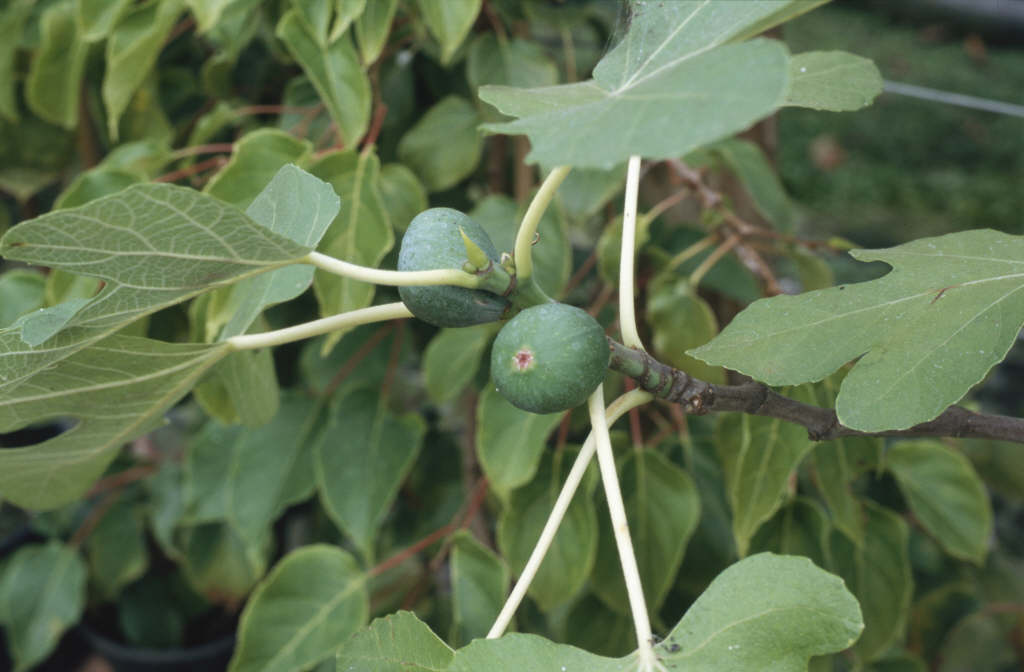Ficus carica 'Brown Turkey' (F)
fig 'Brown Turkey'
A large, deciduous shrub with bold, deeply lobed leaves edible fruit to 10cm in length, at first green, but purplish when ripe. Usually one crop of fruit per year, but sometimes two in a hot summer or under protection
Size
Ultimate height
2.5–4 metresTime to ultimate height
10–20 yearsUltimate spread
2.5–4 metresGrowing conditions
Moisture
Moist but well–drained, Well–drainedpH
Alkaline, NeutralColour & scent
| Stem | Flower | Foliage | Fruit | |
| Spring | Green | |||
|---|---|---|---|---|
| Summer | Green | |||
| Autumn | Green | Green Purple | ||
| Winter |
Position
- Full sun
Aspect
South–facing or East–facing or West–facing
Exposure
Sheltered Hardiness
H4Botanical details
- Family
- Moraceae
- Native to GB / Ireland
- No
- Foliage
- Deciduous
- Habit
- Bushy
- Potentially harmful
- Humans/Pets: Harmful to skin with sunlight. For further information and contact numbers regarding pets, see the HTA guide to potentially harmful plants
- Genus
Ficus can be evergreen or deciduous trees, shrubs or climbers, with often leathery, simple, entire or lobed leaves and tiny flowers borne within a hollow receptacle which enlarges to form the fruit
- Name status
Accepted
- Horticultural Group
- This genus produces fruit, but not necessarily edible fruit
How to grow
Cultivation
Best grown fan-trained against a warm wall or fence, using a root restriction method such as a box of paving slabs with the bottom filled with a warm layer of rubble or broken crocks. Also suitable for cultivation in a container. See fig cultivation
Propagation
Propagate by hardwood cuttings
Suggested planting locations and garden types
- Architectural
- City and courtyard gardens
- Cottage and informal garden
- Mediterranean climate plants
- Wall side borders
- Edible fruit
Pruning
In March remove a proportion (1/4 to 1/3) of older branches
Pests
May be susceptible to glasshouse red spider mite, thrips, mealybugs and scale insects under glass
Diseases
May be susceptible to honey fungus
Get involved
The Royal Horticultural Society is the UK’s leading gardening charity. We aim to enrich everyone’s life through plants, and make the UK a greener and more beautiful place.
